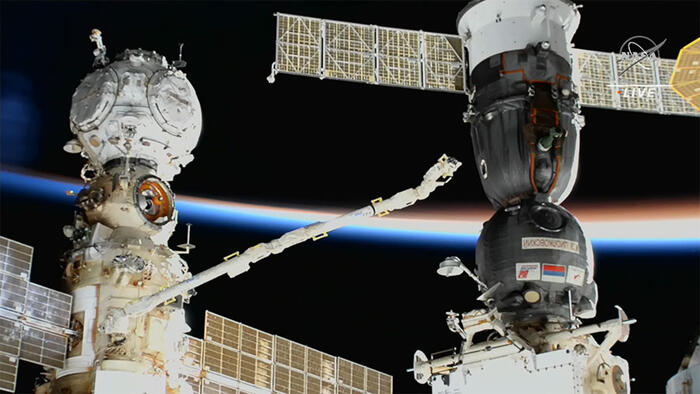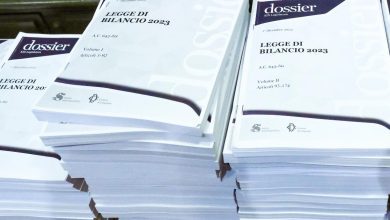The Soyuz Problem, the Russians and the Americans Work Together – Space and Astronomy

It could be the coolant, which leaked for hours from the only Russian Soyuz shuttle docked at the International Space Station. It is the Soyuz MS-22 that the Russians Dmitry Petlin and Sergey Prokopyev arrived on board on September 21, along with the American Frank Rubio, and it is the same one with which the three should return to Earth in about three months, in addition to the shuttle available to the crew in any emergency. The Russians and Americans are working together to solve the problem, once again confirming the now unique climate of cooperation that has always characterized the space station.
The leak was discovered when night fell in Italy. Prokopyev and Betlin began preparing for a spacewalk, which had once been postponed, last November 25, due to a problem with one of their EVA suits. But even this time they had to stop, when a swarm of droplets escaping from the Soyuz’s stern forced everything to stop. It is impossible to determine what it was and the only evidence is a pressure drop detected in the Russian Shuttle’s external cooling circuit: which immediately led to the hypothesis that it was the radiator.
The Soyuz MS-22 spacecraft had an apparent coolant leak for more than three hours. International Space Station managers discuss the situation.
The astronauts preparing for tonight’s spacewalk have returned safely to the space station. https://urlsand.esvalabs.com/?u=https%3A%2F%2Ft.co%2F2lnIsF9yec&e=e7b68d7b&h=94168f47&f=n&p=y pic.twitter.com/Sbc6k8iiA2
– SpaceflightNow (SpaceflightNow) December 15, 2022
The drops continued to flow for hours, while technicians on the ground tried to analyze the situation. “Russian technicians continue to verify the data and consult with both NASA technicians and other space station partners,” the US space agency said. Meanwhile, NASA also announced that the crew is not in danger. There are currently seven astronauts on the space station: along with Betlin, Prokopyev and Rubio are the four who arrived with the Crew Dragon: Japanese Koichi Wakata, Russian Anna Kikina, and Americans Josh Kasada and Nicole Mann.
Soyuz MS-22 is the only Russian spacecraft capable of carrying cosmonauts currently attached to the space station; The other vehicle capable of carrying a crew is the American Crew Dragon, while the other four vehicles moored are all payload: two are Russian Progress and then American Cygnus and Dragon.
There are still many unanswered question marks. The first relates to the nature of the leaking fluid and whether it is confirmed that it is indeed coolant. We then need to understand the cause of the loss and one of the first hypotheses is the impact of a small meteorite or space debris, but it is also possible that this is a glitch in the Soyuz systems. Astronaut Kekina began the first photographic examination of the area where the leak occurred using the ERA (European Robotic Arm) robotic arm, sending the images back to Earth for analysis. It should also be checked whether the damage can be repaired in orbit or whether the Russian space agency Roscosmos can launch another Soyuz to allow the Russians and American Rubio to return to Earth. The next Soyuz flight is currently scheduled for March 2023.

“Bacon trailblazer. Certified coffee maven. Zombie lover. Tv specialist. Freelance communicator.”





